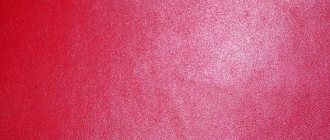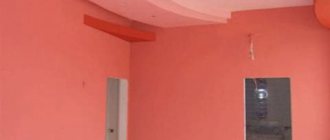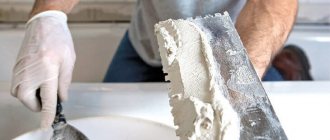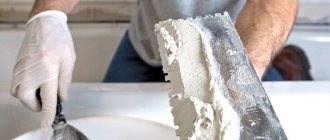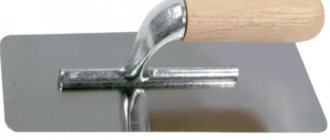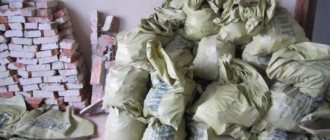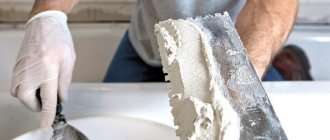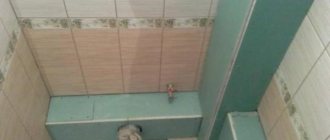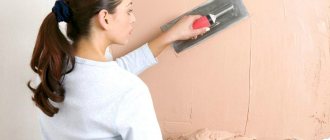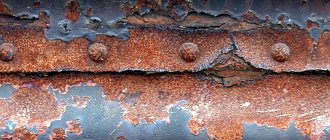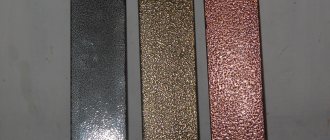Protecting the walls of the bathhouse from the heat of the stove: rules for constructing protective screens and casings
During the heating of the bath, the surface of the stove heats up to 300-400°C. At the same time, it begins to emit infrared rays and itself becomes a source of heating. The coming heat is distributed throughout the steam room, but first of all it hits the walls adjacent to the stove. If the walls are wooden, then under the influence of high temperatures their charring begins. And there it’s already a stone’s throw away! The only truly effective way to insulate wooden walls from heat is to create protective screens and cladding from non-combustible materials in the bathhouse.
Useful tips
When performing insulation work in a bathhouse to ensure the highest degree of safety from fire, it is recommended to consider the following tips:
- it is mandatory to insulate the floor, since it is also affected by high temperatures;
- the choice should fall only on high-quality materials for insulation (it is better to ignore those that are too cheap);
- Ideally, use two-layer thermal insulation to ensure the safety of the room.
Such simple manipulations will help reduce the possibility of ignition to zero.
When is protection needed at all?
The need to install protective casings and screens does not always arise. If a fire-safe distance is maintained between the stove and the nearest flammable surface, additional protection is not needed. At this distance, the IR rays are scattered, weakened, and the amount of them that the wooden wall receives can no longer lead to damage.
It is believed that the safe distance from the wall to the brick stove (quarter-brick laying) is at least 0.32 m, from the wall to the metal stove (not lined) - at least 1 m. For a metal stove lined from the inside with brick or fireclay, the distance decreases to 0.7 m.
Thus, maintaining fire safety distances is more possible in large baths, where the issue of saving space is not relevant. In family steam rooms, where every centimeter of space counts, installing a stove 0.3-1 m from the nearest walls is impractical. In this case, the safety distances established by the standards must be reduced using screens and casings.
Basalt cardboard characteristics
The main difference of this material is its high thermal insulation and sound insulation. It is non-flammable, fire-resistant and fireproof. At the same time, basalt cardboard has extremely low hygroscopicity, in other words, it is not able to absorb moisture from the air. The temperature of use of this material is +500 degrees, while for a short period it can withstand up to +700 degrees. Another reason why cardboard should be used in a bathhouse is that it has excellent vapor permeability. It has increased resistance to microorganisms and rodents, does not crumble, does not rot, and is resistant to vibrations and thermal-oxidative aging. The approximate service life of this material is 50 years.
At the same time, basalt cardboard is very easy to cut; this can be done even with a simple knife. The sheets bend well and can take any shape, which allows for excellent thermal insulation of the bath room. Parts made of such material can be fixed using special glue
When cutting, it is necessary to take into account the shrinkage of the cardboard, which can occur from exposure to elevated temperatures. In case of high humidity, the sheet may bend, but after drying it will return to its previous shape. In total, it can withstand more than two thousand cooling and heating cycles
In total, it can withstand more than two thousand cooling and heating cycles.
Protective screens near (around) the stove
Protective screens are insulation panels that cover the side surfaces of the furnace and reduce the intensity of thermal radiation. Screens can be metal or brick. As a rule, they are used for metal furnaces.
Method #1 - metal screens
The most common protective screens are factory-made steel or cast iron sheets. They are installed around the stove, at a distance of 1-5 cm from the walls of the firebox. Depending on the need to insulate one side or another of the furnace, you can purchase side or front (front) screens. Many metal furnaces are initially manufactured with protective screens in the form of a protective casing.
Protective screens make it possible to reduce the temperature of external metal surfaces to 80-100°C and, accordingly, reduce the fireproof distance to 50 cm. The total distance from the firebox to the wall (including a gap of 1-5 cm) will be 51-55 cm.
Installing protective screens is not difficult. Thanks to the presence of legs, metal panels are easily bolted to the floor.
Method #2 - brick screens
A brick screen can cover all the side surfaces of a metal furnace, representing its outer cladding. Then the stove will be in a casing made of brickwork. In another case, a brick screen is a wall separating the stove and the flammable surface.
To lay the protective screen, solid fireclay bricks are used. The binder is cement or clay mortar. It is recommended to use half a brick (thickness 120 mm). But, if there is a lack of material, it is possible to make a wall of a quarter of a brick (60 mm thick), although in this case the thermal insulation properties of the screen will be reduced by half.
Small openings (sometimes with fire doors) are left at the bottom of the shield for air convection between the brick wall and the stove.
The brick walls of the screen must end at least 20 cm above the top surface of the oven. Sometimes the masonry goes all the way to the ceiling.
The brick screen is not installed flush against the walls of the stove, the optimal distance is 5-15 cm. The acceptable distance from the brickwork to the flammable wall is 5-15 cm. Thus, the use of a brick screen allows you to reduce the distance from the stove to the wooden wall to 22-42 cm (stove - ventilation gap 5-15 cm - brick 12 cm - ventilation gap 5-15 cm - wall).
SNIP requirements
Protection of the walls of the bathhouse from the heat of the stove is carried out in accordance with the requirements of building codes. It is important for a home master to know the main ones.
SNiP III-G.11-62
“Heating stoves, smoke and ventilation ducts of residential and public buildings. Rules for production and acceptance of work.”
According to these standards, the gaps from the heater to the wall surfaces are:
- the thickness of the covered wall panels of the heater is 24 cm, with an applied layer of plaster from a lime solution, or with the addition of a layer of cement, the thickness of which is 25 mm, as well as when applying a layer of asbestos and clay solution, 4 cm thick - the distance must be at least 13 cm;
- the thickness of the wall of the heater is half a brick and applying a layer of lime plaster and adding asbestos, 25 mm thick or when protected with asbestos-vermuculite slabs 4 cm thick - a distance of 300 mm;
- when installing steel stoves, with the walls of the stove covered with refractory material, the minimum distance to plastered wooden walls is 700 mm, with a layer thickness of gypsum and lime mortar of 25 mm;
- When installing a steel stove in a bathhouse with unplastered walls, the distance to them should be at least 1000 mm.
The fire inspector checks and signs permits for the use of the bathhouse when conducting control measurements. Only after this procedure can you use the bathhouse.
SNiP 2.04.05-91
"Heating. Ventilation and air conditioning."
When purchasing an industrial model of a furnace, the installation requirements can be found in the instructions. Home craftsmen must know and fulfill several requirements:
- the ceiling in the bathhouse is protected by asbestos slabs, plaster and sheet metal, up to 1 cm thick; in this case, the brick-lined stove is made high so that the gap to the ceiling is at least 250 mm;
- when installing a steel stove with a protective heat-insulating layer, maintain a gap to the ceiling of at least 700-800 mm if the ceiling is plastered and protected with non-combustible materials;
- in all other cases, the distance to the ceiling should be 1200 mm.
But the DIYers are faced with the question of how to cover the wall near the stove in the bathhouse?
Protective non-combustible wall coverings
Walls adjacent to the hot furnace walls are susceptible to spontaneous combustion. To prevent their overheating, special casings consisting of heat-insulating and non-combustible materials are used.
Option #1 - reflective trim
Sheathing consisting of a combination of non-combustible insulation and metal sheets is effective. In this case, thermal insulation is attached to the wooden surface, which is covered with a stainless steel sheet on top. Some use galvanizing for these purposes, but, according to some data, when heated, it can release harmful substances. It’s better not to risk it and buy a stainless steel sheet.
For greater efficiency, the metal sheet of the screen must be well polished. The mirror surface helps to reflect heat rays from the wooden surface and, accordingly, prevents its heating. In addition, a stainless steel sheet, directing IR rays back into the steam room, transforms hard radiation into softer radiation, better perceived by humans.
The following can be fixed under stainless steel as thermal insulation:
- Basalt wool - it has high thermal insulation properties and is absolutely safe when used in a bathhouse. It has increased hygroscopicity and does not burn.
- Basalt cardboard is thin sheets of basalt fiber. Used as a fireproof, sound and heat insulating material.
- Asbestos cardboard is a sheet fire-resistant heat insulator. It has high strength and durability, protects flammable surfaces from ignition.
- Minerite is a non-flammable sheet (plate) specially manufactured for shielding stoves, fireplaces, and easily flammable surfaces in baths and saunas.
A popular example of cladding using a metal sheet is this “pie”: wall – ventilation gap (2-3 cm) – insulation (1-2 cm) – stainless steel sheet. The distance from the wooden wall to the stove is at least 38 cm (SNiP 41-01-2003).
Ceramic bushings are used to attach the sheathing to the wall. They do not heat up and allow the formation of ventilation gaps between the thermal insulation and the wall.
If the distance between the wooden wall and the stove is minimal, then the cladding is made of two layers of fire-resistant insulation, for example, mineralite. In this case, the sheets are fixed through ceramic bushings, maintaining a gap of 2-3 cm. The top sheet is covered with stainless steel.
Option #2 - sheathing with cladding
Of course, protective cladding with stainless steel perfectly protects wooden walls from heat and fire. But it can spoil the impression of the most expensive finish. Therefore, if the steam room is designed in a decorative style, the fire-resistant lining is masked with heat-resistant tiles. The tiles are laid on heat-resistant adhesive, for example, produced by Terracotta.
The best materials for cladding walls near the stove:
- Terracotta tiles are made from baked clay. It is characterized by strength, heat resistance, durability. Terracotta tiles can be matte or glazed (majolica), and the color varies from pastel yellow to brick red.
- Clinker tiles are also made of clay and look similar to facing bricks. Unlike terracotta, clinker tiles are denser. The color range covers almost all colors, ranging from white to black, including green and blue tones, unusual for clay.
- Tiles are a type of ceramic tile. It usually has embossing on the front surface in the form of a design or ornament.
- Porcelain tiles are heat-resistant, durable tiles. Depending on the method of processing the front surface, tiles can imitate natural stone, brick, or wood. The color range includes all natural shades, from white to black.
- Soapstone is a rock of grayish or greenish color. It is fireproof, waterproof and durable.
Related article: How to attach insulation to a wooden wall
Attaching fire-resistant tiles directly to walls will not have a thermal insulation effect. The wall will still heat up, which can lead to spontaneous combustion. Therefore, tiles are used only as an element of a protective “pie” of the following design: wall – ventilation gap (2-3 cm) – fire-resistant sheet material – tiles. It is recommended to maintain a minimum distance of 15-20 cm from the tiles to the walls of the oven.
Any material from this list can be used as a fire-resistant element in the cladding:
- Fire-resistant drywall (GKLO) is drywall supplemented with fiberglass fibers. Resists thermal effects without structural deformation.
- Minerite is a cement-fiber board, absolutely non-flammable. Minerite slabs are moisture resistant, do not rot, and do not decompose.
- Glass-magnesium sheet (FMS) is a material in the form of plates made on the basis of magnesium binder and fiberglass. It has heat and sound insulating properties and is not destroyed by water and temperature changes.
The protective cladding, which must comply with the ventilation gap, has a very low heat absorption coefficient, so the wall underneath it practically does not heat up. In addition, the use of cladding allows you to disguise the protective “pie” and maintain the finishing of the steam room in the same style.
Options for washing and steam rooms: materials
Let's briefly look at the materials suitable for finishing bath sinks and steam rooms.
Wood
In the photo: finishing the steam room of a bathhouse with wood (lining)
To decorate the steam room, it is strongly recommended to use hardwood, such as linden, aspen, and alder. These rocks are suitable for walls and ceilings, finishing doors and windows.
For the floor, you can use more resistant species, for example, larch. Conifers should not be used because of the resin they contain, which flows out when the temperature rises. But on the floor the temperature is usually low, so there are no restrictions.
However, it is worth saying that linden and aspen have low resistance to rotting and biocontamination (for example, by fungi). Therefore, we still recommend additionally protecting surfaces made of this wood with impregnations and varnishes.
There is no point in using wood in a sink, unless it is a design decision. In this case, it is worth recommending conifers - they are more resistant to water.
Stone
An option for decorating a steam room in a bathhouse is stone tiles. Of course, we are talking only about partial finishing, for example, near the stove (more on that below).
What types of stone are best suited for finishing walls in a steam room? You will be surprised, but there are practically no restrictions here - the main thing is that it is not rock salt, for example. But pink Himalayan salt is often used as interior decoration. Of course, it will not dissolve as quickly as table salt in a pot of soup, but its composition is the same as salt in a salt shaker.
The wall behind the stove, of course, heats up, but the stones are quite capable of withstanding such temperatures without harming themselves. But the situation will change if you decide to cover the stove with the same stone. The temperatures there are somewhat different. And it’s worth focusing at least on those stones in the lining of which ready-made stoves are sold, for example, soapstone.
As an option, you can decorate part of the steam room not with smooth tiles, but with cut pebbles or cobblestones, which are mounted on the mortar with the convex side up. It turns out to be quite a nice decor. As you can see, even street cobblestones can come in handy.
In the photo: interior decoration of the steam room with stones around the stove
You can use stone in a sink, but this is rarely done, because it is easier and cheaper to cover the walls and floor with ready-made ceramic tiles.
Tile
The tiles in the steam room are used either on the floor or on the wall behind the stove. As for the floor, rough tiles, for example, Metlakh, behave best here. In general, it can be recommended for wet rooms. But it is better not to consider all varieties of smooth glazed tiles as a covering for the floor of a steam room.
In a washing room, it is also better to use rough tiles on the floor, and for the walls... here, in general, you can see more clearly how sober visitors will wash in your washing room. If not particularly so, then give up smooth tiles there too, eliminating unnecessary opportunities for injury.
In the photo: finishing the shower room of the bathhouse with tiles
Sealant
Special mention should be made of such finishing material as sealant for steam rooms in bathhouses.
Sealants in a steam room can be used only in two cases: if it is a bathhouse made of logs and needs to seal the joints between the logs, as well as sealing cracks in the logs themselves, and the second option is to seal the joints, for example, foam glass, if it is used as a heat insulator .
In the first case, we can recommend special sealants for wood that have a certain elasticity, because wood tends to constantly change volume under the influence of moisture. In addition, it is worth asking the sellers which wood sealants can withstand steam room temperatures well (name the numbers at which you are used to steaming).
We came across a report from one bathhouse owner in which he praised the Perma-Chink wood sealant he used for seams and Check Mate for sealing cracks. However, we cannot say with certainty that this was not promotional material.
As for the sealant for the heat insulator, then you need to take silicone without impurities, for example Ottoseal S 73.
List of fireproof materials for finishing walls around stoves
According to fire safety rules, the arrangement around stoves, fireplaces and fuel boilers must be done using fire-resistant special materials, which can simultaneously protect a residential or ancillary building (bathhouse) from possible fire hitting the walls, and at the same time not cause harm to health.
To create a favorable home atmosphere, any stove or fireplace becomes very hot and generates intense heat, which in turn can be a source of ignition or fire. Therefore, it is important to carefully select the right materials when arranging a heat source in a house, bathhouse or basement, if we are talking about a fuel boiler.
Types of materials
Refractory materials can be roughly divided according to the method of heat transfer:
- Heat reflective – aimed at reflecting infrared radiation into the room;
- Preventing loss due to its physical and chemical properties.
On video of fireproof materials for walls around furnaces:
But all of them can also differ in the type of raw materials from which they are produced:
- With organic components , for example, polystyrene foam materials, although their fire resistance is very low, they are best suited for walls near stoves with low heat;
- Inorganic is a broad class of non-combustible materials for insulating walls of a wide variety of fire resistance, including very flammable ones, such as wooden floors. These include stone and basalt wool, pressed into large slabs, fiberglass wool, lightweight cellular concrete slabs with fire retardant impregnations, honeycomb plastics, foamed perlite or vermiculite, and polypropylene. However, such a beautiful decorative thing as Leroy Merlin sheet plastic is definitely not suitable.
- Mixed type - these include asbestos-cement refractories, asbestos-lime or silica, foamed from a variety of inorganic substances.
Basic requirements for refractory materials
Many country buildings are built from wood, be it a cylindrical or frame house; without a stove or fireplace it is difficult to survive a frosty winter, so their arrangement is approached very carefully, and the materials placed around the stoves are chosen so that they are:
- Effectively and reliably prevented any attempted fires;
- Environmentally friendly, so that when heated they do not release harmful substances into the home air.
Information from this article will help you understand what composition of mortar for plastering a stove exists and is most often used.
But what are the dimensions of a standard oven brick can be seen here.
You may also be interested in learning about what kind of brick is used for laying stoves.
For walls around stoves
A long time ago, people used asbestos sheets to line the walls around stoves, but it turned out to be very harmful to health and the environment - its microparticles can enter the lungs or be deposited on things, which leads to serious illnesses, and with strong heating they also release carcinogenic substances. substances. Therefore, the best materials can be considered:
Fire-resistant plasterboards. can act as the basis for covering walls around hot stoves, and for decoration, porcelain tiles of the most unusual colors can be used.
The sheets have the following characteristics:
- Fire resistance – up to 30 minutes of fire resistance;
- Does not ignite for up to 1 hour even after a fire has formed;
- Slab parameters – 120 x 250 x 1.25;
- On the front and back sides there is cardboard treated with gypsum, inside there are fiberglass threads that will resist fire;
- The ends of the sheets are covered with cardboard material, and there is a joining chamfer along them;
- Fastening can be done either using adhesives or self-tapping screws.
Fireproof minirite slabs. The material has excellent heat-resistant properties and is produced exclusively from environmentally friendly substances, including:
- Compositions of white or gray cement make up up to 90% of the total material;
- Included are mineral fibrous materials;
- For strength and durability, fiber reinforcing boards are used.
Asbestos fiber is completely excluded from the composition, which improves the quality of the material for a home stove. It is easy to fix it to the wall with screws close to the wall itself; for reliability, you can mount 2 sheets of minirite. Note! When installing, it is necessary to leave a small distance, since the material may increase in size when heated. For other walls, you can choose a similar decorative brick finish.
Protective stainless steel sheets are a slightly expensive but reliable fireproof material that can be used to protect not only the walls of the house, but also the basement when installing a heating boiler. But in order to provide the greatest protection, special fiberglass with thermal protective properties should be placed under the stainless steel - the structure will reliably protect the house from any attempts to start a fire. Choose the substrate carefully so that it does not contain harmful phenolic resins; when heated strongly, they release substances that are too hazardous to health.
Heat-resistant material made of basalt fiber pressed into mats - it is hygroscopic, has a high degree of resistance to fire, and can remain unchanged at temperatures up to 900 degrees Celsius.
Superisol sheets for wall insulation are a practical and versatile thermal insulation material, with low specific gravity and excellent strength and durability.
Related article: How to find wiring in a wall without a device
Insulation of walls with heat-resistant terracotta tiles . The main advantage is the complete environmental purity of the material; they do not contain any chemical coloring compounds, and have excellent vapor permeability and fire-resistant properties. Glazed ceramic tiles for interior wall cladding also look beautiful.
For finishing walls under a boiler
A gas or steam boiler heats up very much to ensure heat transfer to the house at the required temperature of the carrier. Therefore, experts recommend equipping walls with porcelain tiles with a high degree of fire resistance. The characteristics are the most reliable - it can withstand high temperatures without visible signs of fire.
It is also possible to use sheets made of fibers impregnated with gypsum; installation is very easy by gluing them to the walls, but it is not recommended to use plastic brick panels for interior wall decoration, since they do not meet fire safety requirements.
Recently, sheets made of xylolite fiber have begun to gain popularity, since they meet all environmental properties in terms of cleanliness and the absence of any harmful emissions, even at elevated temperatures of about 1000 degrees. The material is also very flexible; these properties make it possible to sheathe the most curved wall surfaces. It can withstand humid and damp air perfectly, its main characteristics do not change.
But what solution should be used for plastering a home stove and how to choose it is described in great detail in this article.
You can find out where and how kiln red solid brick m 200 is used by reading this article.
For those who are used to doing everything with their own hands, it is worth paying attention to how to make a solution from clay for laying stoves.
But if you want to do everything quickly and without unnecessary hassle, you should turn your attention to a ready-made mortar for laying stoves. In order to make the right choice. It’s worth following the link and reading the article.
But what is the price of red stove brick and how to choose it for your construction site, you can find out from this article.
Thermal insulation of the steam room
Everyone knows that before covering a steam room, the room must be insulated and a vapor barrier installed.
The choice of material for decorating a steam room in a bathhouse with your own hands is great. Today, there are several types specifically for the steam room. Such materials that tolerate temperature changes well and do not emit harmful substances when heated do not rot and do not contribute to the appearance of fungus. They are also fire resistant and will last for many years.
Basalt and mineral wool are the most popular cladding materials. And foil film is excellent for vapor barrier. The foil material is sheathed on the walls and ceiling and used for waterproofing them. It looks like a roll of basalt wool only with a layer of foil.
Ceiling insulation
We attach the foil material to the ceiling using a stapler, with the reflective side facing the room. We overlap the joints and seal them with aluminum tape.
We fasten the sheathing for the future ceiling (for cladding to hide the foil layer) using screws across the beams. You can read about how to vent a chimney through the ceiling here.
Also, do not forget in the attic, before filling the ceiling with insulation (earth, expanded clay), put a film on it so that dust does not get inside the room, or cover all the cracks between the boards.
Thermal insulation of walls
The technology for covering the walls in the steam room is the same as for the ceiling. Just before insulating the walls in the bathhouse, you need to smooth out all the cracks and joints. The insulation is attached parallel to the floor, from top to bottom. Laying is done in three layers: hydro-, heat-, and vapor barrier.
The first layer of waterproofing is needed to prevent condensation from settling on the walls. The second layer is for insulation; it is laid in a timber sheathing. The third layer is needed to protect the insulation from moisture.
Floor insulation
A floor made of concrete is certainly more durable than wood, but such floors are cold, so people still give their preference to wood.
For a wooden floor, the foundation is poured, beams are laid, and logs are placed on them. The voids formed between the joists and beams are filled with insulating material, most often expanded clay or sand. Next, a vapor barrier and the “first floor” are laid, and insulation material and waterproofing are placed on it, and only then we make the finishing floor.
For a concrete floor, a base is made of concrete and crushed stone, 12-15 cm thick. Waterproofing can be installed after the concrete mixture has completely dried. It can be roofing felt or bitumen mastics. The concrete is coated several times with bitumen mastic, and only then we apply waterproofing. The insulation can be mineral wool, perlite or expanded clay with a layer of 10-15 cm. The next layer of the floor is made on the heat-insulating surface.
The wall near the stove in the bathhouse - finishing features
To heat the air in the bathhouse to the required temperature, the stove is heated very intensively and during the process its walls can heat up to four hundred degrees. Naturally, the walls adjacent to it also heat up, and if they are made of flammable material, and most often it is wood, then a fire in this case is inevitable. In order to prevent such a situation, the walls near the stove in the bathhouse are decorated with non-combustible materials. We will find out which of them are best suited in this article.
The interior should please
The most optimal wood species for each room are described above.
It is impossible to imagine the vaping process without a wonderful woody aroma.
Of course, it is very difficult to get by with wood alone in finishing a bathhouse. For example, it is better to use ceramic tiles for floors, especially in the washing area. In order to make such a surface safer, a wooden grate should be installed on top of it.
If you still want to completely decorate the washroom as wood, we recommend treating the boards with a special varnish, the effect of which will be no worse than that of tiles.
To give the room an unusual touch, you can make unusual wooden lamps yourself.
Insulation methods
There are several techniques that allow you to reliably insulate wooden structures from the heat of the stove. Some of them involve a fairly large amount of work, while others are much simpler.
The construction of a box made of brick or stone will require the most time - it will be necessary to lay out several walls that will protect the wood from heat. In addition, this protection option requires a gap between the wood and the brickwork from 5 to 15 centimeters. There should be about 10 centimeters between the casing being built and the walls of the stove. All this eats up useful space and requires some mason skills to work on.
Factory screens are installed quite simply and are not that expensive. They could be an ideal solution if they did not require even larger technological gaps between different surfaces. Therefore, such finishing of the wall near the stove is possible only in a fairly spacious bathhouse. If you need to save space, it is better to look for another solution that allows you to reduce all the gaps from wooden partitions.
The third option allows you to reduce the distance to 15 centimeters, which is already more acceptable. At the same time, this method allows you to create the most beautiful design, which is important. However, there will be a lot of work and the costs in this option may be much higher than in the previous ones. In addition, this insulation method requires a more detailed consideration due to the characteristics of the assembled structure.
How to assemble a protective screen yourself
The essence of the assembled protective structure is its multi-layered nature. After everything is installed, you will get a kind of pie, if you count from the surface of the wall: a ventilation gap directly at the partition, non-flammable heat-insulating material, decorative cladding. It is this finishing of the walls in the bathhouse around the stove that allows you to maintain a uniform design style for the entire room and maximally protect the wooden partitions from fire.
Important: the ventilation gap should not be less than 3 centimeters. This distance will allow the air to circulate and take away the bulk of the heat. For air circulation, technological openings must be provided in the lower part of the casing.
The structure is easy to assemble. Pieces of fire-resistant material are mounted on the walls as the foundation of the entire structure. Next, a sheet of thermal insulation material, for example, a glass-magnesium sheet, is attached. After this, the outer surface of the sheet is decorated with decorative material - tiles, porcelain stoneware or soapstone.
The last option is the most beautiful and durable, but it costs more than the others.
Important: the dimensions of the assembled screen must exceed the dimensions of the oven by 25 - 30 centimeters in all directions. Under the stove itself, it is necessary to place a base made of non-combustible material.
If the wall of a sauna or bathhouse near the stove is decorated with a material such as ceramic tiles or porcelain stoneware, one of its properties must be taken into account: the material itself practically does not change its size when heated, but the solution in the seams between the tiles can expand significantly. Therefore, the seams should not be very thin - when expanding, the composition can cause the glued tiles to peel off from the base. In addition, you should use porcelain stoneware with caution - if it gets splashed with water during steaming, it can crack.
Fire resistant structures
A special heat-resistant cladding is used as protection for the walls. To do this, the fire-resistant cladding is covered with heat-resistant tiles. Non-flammable glue is used for its installation. The following facing materials have good fire-resistant qualities:
- terracotta tiles;
- tiles;
- porcelain stoneware;
- soapstone and so on.
In addition, fire-resistant plasterboard, mineralite, glass-magnesium sheet and other fire-resistant boards for a bathhouse can be used as fire-resistant protection for walls. It must be taken into account that for each type it is necessary to provide ventilation in the form of a gap at the bottom. Practice shows that the use of cladding as heat-resistant protection for walls in a bathhouse has almost the same thermal characteristics as reflective cladding. The only drawback is the cost, which is several times higher than standard options.
Protecting a wooden wall from the heat of a stove
Wooden baths require especially careful compliance with fire safety rules when arranging them. The source of the fire can be anything, an unextinguished cigarette, coals falling from the furnace of the firebox, an uncleaned chimney, but the main source of threat remains the stove itself.
Related article: How to mount a picture on a wall without drilling
The surface of the stove heats up to 300° - 400°, the heat falls on the wooden walls, which leads to their excessive heating and charring. It is extremely difficult to stop the process of ignition of wooden surfaces; the best way to avoid a fire is to prevent it. There are two truly effective ways to insulate the surface of wooden walls from the heat of sauna stoves - protective equipment in the form of a screen or the construction of special cladding from non-combustible materials.
Cleaning loose tiles
If there is a supply of facing material, then use it, or buy the same ceramics; if not, the fallen off finishing is cleaned of the solution. To do this effectively, in a ceramic-friendly way, use an angle grinder with a dry cutting disc. The tiles are soaked in water for half an hour to soften the glue and reduce the amount of dust. Then the ceramics are laid face down on a flat wooden surface, pressed with a clamp through a rubber pad and the old mortar is cut off or ground off at an acute angle to the surface. The edges of the tiles are cleaned of grout with sandpaper.
When is this required?
There are times when there is no need to protect walls. If the stove is located at a safe distance from the wall from a fire safety point of view, the installation of protective screens and other measures can be neglected. The distance from the walls that is required to reduce the heat from the source varies:
- A stove laid in a quarter of a brick should be located no closer than 35-40 cm from the wall;
- A metal stove without lining should be placed a meter away and no closer;
- A metal one with a lined furnace can be installed 70-75cm from the wall.
However, not every steam room has the opportunity to fulfill these requirements, due to the small area. The layout of steam rooms with an area of 6-8 m² can hardly accommodate the necessary set of items for the steaming procedure. Therefore, the need to insulate walls with special sheathing is relevant.
Application of protective screens
Screens are shields made of brick or metal that protect walls from intense thermal radiation. Similar protection is used when installing metal stoves.
- Metal screens are made from steel or cast iron sheets, these
casings surround the heat source with a distance of 3-5cm.
Advice! When purchasing a metal sauna stove, you should give preference to a model equipped with a metal casing. Its cost is not much higher, but the issues of wall insulation are eliminated.
Additional frontal or front shielding, which is located on the walls depending on the location of the stove, will not hurt. The protection guarantees the wood from overheating, reducing the temperature by 100 degrees or more, and provides the opportunity to save space in the steam room. A stove protected by a casing can be installed at a distance of 50-55cm from the wall.
Installation of screens is simple. The casing, equipped with legs, is secured to the floor by side or front screens - with galvanized nails or self-tapping screws.
- Brick screens are masonry used to cover the stove with
on all sides, the same casing, only made of brick. Another method is to lay half a brick between the firebox and a wall made of solid fireclay bricks laid on a solution of clay and cement. The width of the wall should be 120mm, although there is an opinion that it is permissible to put 60mm in a quarter of a brick, but it should be remembered that in this case the thermal insulation value is reduced by exactly half. It is recommended to raise the height of the masonry 20-30 cm above the surface of the firebox, but if you raise it to the ceiling, it will not be worse.
The screen should be placed at a distance of 10-15cm from the wall, 5-15cm from the stove, that is, the space saving is 30-40cm
Important! Functional openings for heat exchange should be made at the bottom of the masonry.
Protective screens are effective; they reduce the temperature to a level acceptable when using high-temperature fuel units. The same function is performed by wall cladding made of non-combustible materials.
Which insulation option is better to choose?
Among the listed options for protective structures, there are no better ones. Everyone chooses an option depending on the size of their wallet. It would be a good idea to stop at finishing the surface with tiles, after preliminary thermal insulation. But in most cases, users prefer metal screens.
Mandatory insulation of the chimney in the bath Source uokoshka.ru
When arranging a bathhouse in a private house, the last option is considered the fastest and most economical. If you follow the technology when performing protective masonry, even the most budget-friendly method will be effective.
Covering bathhouse walls with non-combustible insulating materials
To prevent the walls from overheating, you can use materials with increased thermal insulation properties and inertness to high temperatures. Two types of materials are used:
- reflective;
- fireproof with lining.
The first type includes materials for wall cladding, consisting of thermal insulation with fire-resistant properties and a metal covering in the form of a sheet.
Insulating walls with reflective sheathing
A protective cake with reflective materials is done this way. First, the thermal insulation is attached using ceramic bushings directly to the wooden walls, then it is sewn up with a stainless steel sheet.
Advice! It is better not to use galvanized metal, since heating may release heavy metals harmful to the human body.
Stainless steel with a polished surface reflects the heat flow inside the steam room, reducing heat loss. In this case, reflected heat is more useful than direct heat. For thermal insulation use:
- basalt cardboard or cotton wool, the only material with increased hygroscopicity, non-flammable, environmentally friendly;
- asbestos cardboard, which reliably protects against flames and has a long service life;
- mineralite, an artificial material made specifically for these purposes.
Protective sheathing requires ventilation gaps of 2 cm from the wall to the insulation, 2 cm from the insulation to the steel sheet. If it is necessary to install the stove as close to the wall as possible, make a double skin of non-combustible insulation, use ceramic bushings to maintain gaps of 2-3 cm and sew them up with a steel sheet.
How to properly insulate a steam room in a brick bath
In order to avoid errors when insulating a steam brick bath, you should choose the right material. For example, mineral wool will provide high-quality thermal insulation if installed outside. When heated, harmful substances can be released, so you should not place the layer inside. But foil materials and pure foil are perfect for insulating a steam room. By installing such a layer, you will ensure that the temperature is maintained at the desired level for a longer time. You should not choose polystyrene foam, which is a fire hazard. When heated, it can be harmful to humans, so it should not be used for thermal insulation of a steam room in a brick bathhouse.

